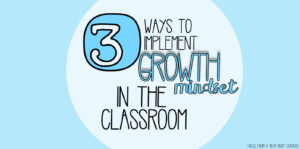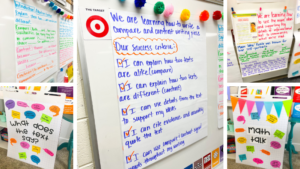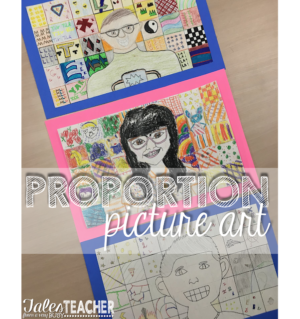Using Common Core
standards is something that is very exciting for me! I am very excited about
all of the possibilities and ideas that come from using Common Core in the
classroom. I feel the Common Core Standards help teachers become more creative
and excited about implementing lessons in their classrooms. Deconstructing the
Common Core and using the Common Core to create new units is hard work, but it
definitely is worth it when students are using their critical thinking skills
and are engaged in learning.
standards is something that is very exciting for me! I am very excited about
all of the possibilities and ideas that come from using Common Core in the
classroom. I feel the Common Core Standards help teachers become more creative
and excited about implementing lessons in their classrooms. Deconstructing the
Common Core and using the Common Core to create new units is hard work, but it
definitely is worth it when students are using their critical thinking skills
and are engaged in learning.
I wanted to blog about this to show you how I deconstruct the standards while I plan for my lessons. Deconstructing standards is a big project for all teachers, as we want to include more units/lessons that
cross disciplines and encourage depth of knowledge.
cross disciplines and encourage depth of knowledge.
Deconstructing the
Common Core is something that is essential. One standard could contain 5
separate lessons. It is important to see the whole picture from one standard…you don’t just want to “cover” the standard…you want to “dive” into it!
Common Core is something that is essential. One standard could contain 5
separate lessons. It is important to see the whole picture from one standard…you don’t just want to “cover” the standard…you want to “dive” into it!
After attending a
few professional development seminars, talking with other teachers, and
researching online I brought together the great ideas I found and complied them
into a list of simple steps to help me deconstruct the standards.
few professional development seminars, talking with other teachers, and
researching online I brought together the great ideas I found and complied them
into a list of simple steps to help me deconstruct the standards.
Here is an example
using an English Language Arts Anchor Standard:
using an English Language Arts Anchor Standard:
CCSS.ELA-LITERACY.CCRA.R.1
Read closely to determine what the text says explicitly and to make logical
inferences from it; cite specific textual evidence when writing or speaking to
support conclusions drawn from the text.
Read closely to determine what the text says explicitly and to make logical
inferences from it; cite specific textual evidence when writing or speaking to
support conclusions drawn from the text.
·
Name
the Standard
Name
the Standard
o
Write/type
the standard out:
Write/type
the standard out:
*Read closely to determine what the text says explicitly and to
make logical inferences from it; cite specific textual evidence when writing or
speaking to support conclusions drawn from the text.
make logical inferences from it; cite specific textual evidence when writing or
speaking to support conclusions drawn from the text.
·
Key Terms
Key Terms
o
Write/type all of the key terms that students will need to know
prior to your lesson with this standard. These should be terms that students
need to know the meaning of and understand. If they don’t know these terms,
they won’t be able to complete the lessons in the standard. You will need to
make sure students have background knowledge on these key terms.
Write/type all of the key terms that students will need to know
prior to your lesson with this standard. These should be terms that students
need to know the meaning of and understand. If they don’t know these terms,
they won’t be able to complete the lessons in the standard. You will need to
make sure students have background knowledge on these key terms.
*Text
*Explicitly
*Logical
*Inferences
*Evidence
*Support
*Conclusions
·
Actions
Actions
o
Now
comes the fun part! Look at the standard and pull out all of the actions
students will have to complete.
Now
comes the fun part! Look at the standard and pull out all of the actions
students will have to complete.
*Read
closely
closely
*Determine
what the text says
what the text says
*Make
logical inferences
logical inferences
*Cite
evidence when speaking
evidence when speaking
*Cite
evidence when writing
evidence when writing
*Support
conclusions
conclusions
·
Objectives
Objectives
o
All of
these actions will now become your objectives for your lessons. I like to use
this acronym (I saw this at wonderful schools in the community where I teach,
where hard working teachers are deconstructing standards daily) when creating
objectives: SWBAT, “Students Will Be
Able To.” This helps me identify what students will be able to do during the
lesson, after the lesson, and independently.
All of
these actions will now become your objectives for your lessons. I like to use
this acronym (I saw this at wonderful schools in the community where I teach,
where hard working teachers are deconstructing standards daily) when creating
objectives: SWBAT, “Students Will Be
Able To.” This helps me identify what students will be able to do during the
lesson, after the lesson, and independently.
*SWBAT
read text closely.
read text closely.
*SWBAT
determine what the text says explicitly.
determine what the text says explicitly.
*SWBAT
make logical inferences from the text.
make logical inferences from the text.
*SWBAT
cite textual evidence when speaking.
cite textual evidence when speaking.
*SWBAT
cite textual evidence when writing.
cite textual evidence when writing.
*SWBAT
support conclusions drawn from the text with textual evidence.
support conclusions drawn from the text with textual evidence.
·
Decide
on Your Unit
Decide
on Your Unit
o
From
this one standard there are SIX objectives! You have SIX separate lessons that
will help your students gain depth when learning how to reach this standard.
Now you’ll have to figure out how you will incorporate these SIX objectives in
your unit. This standard lends itself well to being taken across the disciplines.
This standard can be used in various content areas, while still being a part of
English Language Arts. As you know, make sure you’re using your grade level
standards to go across disciplines. For example, I teach 2nd grade
this year, so I would use my 2nd grade social studies standards
(which are also deconstructed J) and implement this ELA standard into my science unit. When you are using this standard, it is
important to make sure you have resources available for students to use. You
will obviously need text that supports the other standards that you using. If I
were doing a 2nd grade social studies standard like understanding
the importance of heroes from long ago, I would be sure to have materials about
America’s heroes for students to research and use in order to meet the
objectives I listed above for CCSS.ELA-LITERACY.CCRA.R.1.
From
this one standard there are SIX objectives! You have SIX separate lessons that
will help your students gain depth when learning how to reach this standard.
Now you’ll have to figure out how you will incorporate these SIX objectives in
your unit. This standard lends itself well to being taken across the disciplines.
This standard can be used in various content areas, while still being a part of
English Language Arts. As you know, make sure you’re using your grade level
standards to go across disciplines. For example, I teach 2nd grade
this year, so I would use my 2nd grade social studies standards
(which are also deconstructed J) and implement this ELA standard into my science unit. When you are using this standard, it is
important to make sure you have resources available for students to use. You
will obviously need text that supports the other standards that you using. If I
were doing a 2nd grade social studies standard like understanding
the importance of heroes from long ago, I would be sure to have materials about
America’s heroes for students to research and use in order to meet the
objectives I listed above for CCSS.ELA-LITERACY.CCRA.R.1.
·
Time
Frame
Time
Frame
o
You’ll
also have to decide how long each objective is going to take. Is one objective
a one-day lesson, two days, or three? Can you fit two objectives into one
lesson if your students already have background knowledge? These are all things
you can think about as you’re planning your unit. Think about your school’s
calendar like minimum days, holidays, etc. Plan your unit to be consistent and
something that won’t be interrupted, while also being sure to create a unit
that goes in depth and doesn’t just cover the topic. Also, keep the key terms
you listed before in mind as you plan your unit. If your students don’t know those key terms,
you may need a lesson or two on them before you dive into your unit! Here’s an
example of my daily planner for this unit:
You’ll
also have to decide how long each objective is going to take. Is one objective
a one-day lesson, two days, or three? Can you fit two objectives into one
lesson if your students already have background knowledge? These are all things
you can think about as you’re planning your unit. Think about your school’s
calendar like minimum days, holidays, etc. Plan your unit to be consistent and
something that won’t be interrupted, while also being sure to create a unit
that goes in depth and doesn’t just cover the topic. Also, keep the key terms
you listed before in mind as you plan your unit. If your students don’t know those key terms,
you may need a lesson or two on them before you dive into your unit! Here’s an
example of my daily planner for this unit:
*Day
1:SWBAT read text closely.
1:SWBAT read text closely.
·
Use
different text on American heroes and demonstrate how to use reading strategies
to read closely, sorting out information that is important about each text
piece.
Use
different text on American heroes and demonstrate how to use reading strategies
to read closely, sorting out information that is important about each text
piece.
*Day
2: SWBAT determine what the text says explicitly.
2: SWBAT determine what the text says explicitly.
·
Use
the same text from the lesson before and demonstrate how to determine what the
text says explicitly. Use a graphic organizer to help model to students how to
sort out the explicit details from the text.
Use
the same text from the lesson before and demonstrate how to determine what the
text says explicitly. Use a graphic organizer to help model to students how to
sort out the explicit details from the text.
*Day
3: SWBAT make logical inferences from the text.
3: SWBAT make logical inferences from the text.
·
By
using the same text and graphic organizers, demonstrate to students how to make
inferences from the text.
By
using the same text and graphic organizers, demonstrate to students how to make
inferences from the text.
*Day
4: SWBAT cite textual evidence when speaking.
4: SWBAT cite textual evidence when speaking.
·
Model
to students how to cite textual evidence while speaking
Model
to students how to cite textual evidence while speaking
*Day
5: SWBAT cite textual evidence when speaking (day 2).
5: SWBAT cite textual evidence when speaking (day 2).
·
Guide
students into using what they learned from the previous lesson to create short
speaking roles where students can site textual evidence while speaking.
Guide
students into using what they learned from the previous lesson to create short
speaking roles where students can site textual evidence while speaking.
*Day
6: SWBAT cite textual evidence when writing.
6: SWBAT cite textual evidence when writing.
·
Model
to students how to cite textual evidence while writing
Model
to students how to cite textual evidence while writing
*Day
7: SWBAT cite textual evidence when writing (day 2).
7: SWBAT cite textual evidence when writing (day 2).
·
Guide
students into using what they learned from the previous lesson to create short
writing pieces where students can site textual evidence while writing.
Guide
students into using what they learned from the previous lesson to create short
writing pieces where students can site textual evidence while writing.
*Day
8: SWABT support conclusions using textual evidence
8: SWABT support conclusions using textual evidence
·
Model
how students can make conclusions about the topic while supporting their
conclusions using text as evidence.
Model
how students can make conclusions about the topic while supporting their
conclusions using text as evidence.
*Day
9: Independent or Collaborative Practice
9: Independent or Collaborative Practice
·
Give
students an independent or collaborative assignment incorporating most or all
of the objectives from the past two weeks’ lessons. This will help you
determine if students met the objectives from the two weeks of lessons.
Give
students an independent or collaborative assignment incorporating most or all
of the objectives from the past two weeks’ lessons. This will help you
determine if students met the objectives from the two weeks of lessons.
*Day
10: Extension
10: Extension
·
On
this day, give your students an extension project or assignment based on the
past two weeks’ lessons. Encourage students to think critically and in depth.
This can also be something that integrates another content area (if it makes
sense) or some type of craftivity or art project to display students’ work.
On
this day, give your students an extension project or assignment based on the
past two weeks’ lessons. Encourage students to think critically and in depth.
This can also be something that integrates another content area (if it makes
sense) or some type of craftivity or art project to display students’ work.
*Day
11: Assessment
11: Assessment
·
Decide
what type of assessment you would like to use to assess if your students met
the objectives. You can always have small assessments at the end of each lesson
throughout your unit too.
Decide
what type of assessment you would like to use to assess if your students met
the objectives. You can always have small assessments at the end of each lesson
throughout your unit too.
So…deconstructing
the standards takes a lot of work! But, in the end, it’s so worth your time and
energy…especially if students are challenged, engaged, and having fun.
the standards takes a lot of work! But, in the end, it’s so worth your time and
energy…especially if students are challenged, engaged, and having fun.
Here
are the steps in simplified from you can follow as you map out your curriculum
for the year:
are the steps in simplified from you can follow as you map out your curriculum
for the year:
· *Name the Standard (s)
· *Key Terms
· *Actions
· *Objectives
· *Decide on Your Unit
· *Time Frame
Now,
some standards may only have one objective. Or there may be a standard your
students have already mastered. If this is the case, you can group the
standards to create a unit too! If you have three ELA standards that you have
deconstructed, and they each have two objectives, they may make a great unit if
you put them together. Obviously, you’ll want to make sure they make sense
being in the same unit! And, you also want to make sure you don’t have too many
objectives for one unit. The standard I deconstructed above would be good for
one unit combined with one or two deconstructed standards from another content
area. It’s all about your classroom schedule and how you want to structure your
units and lessons.
some standards may only have one objective. Or there may be a standard your
students have already mastered. If this is the case, you can group the
standards to create a unit too! If you have three ELA standards that you have
deconstructed, and they each have two objectives, they may make a great unit if
you put them together. Obviously, you’ll want to make sure they make sense
being in the same unit! And, you also want to make sure you don’t have too many
objectives for one unit. The standard I deconstructed above would be good for
one unit combined with one or two deconstructed standards from another content
area. It’s all about your classroom schedule and how you want to structure your
units and lessons.
Thank
you for reading! I hope this post can help you! Leave a comment if you have a
question. I’d love to share ideas and collaborate.
you for reading! I hope this post can help you! Leave a comment if you have a
question. I’d love to share ideas and collaborate.
Happy
teaching and deconstructing!
teaching and deconstructing!





